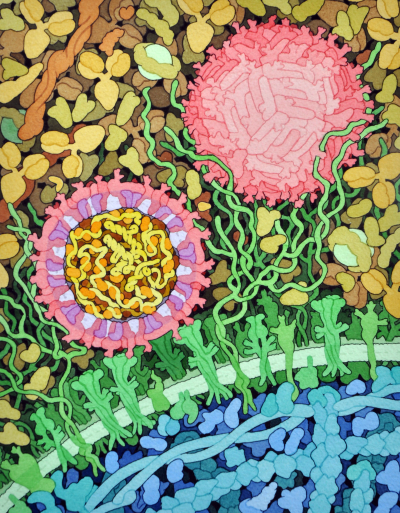Molecular Landscapes by David S. Goodsell
Zika Virus, 2016
Acknowledgement: Illustration by David S. Goodsell, RCSB Protein Data Bank. doi: 10.2210/rcsb_pdb/goodsell-gallery-015
Zika virus is shown in cross section at center left. On the outside, it includes envelope protein (red) and membrane protein (magenta) embedded in a lipid membrane (light purple). Inside, the RNA genome (yellow) is associated with capsid proteins (orange). The viruses are shown interacting with receptors on the cell surface (green) and are surrounded by blood plasma molecules at the top.
The painting was created as part of the Molecule of the Month on Zika virus. At the 2017 Vizzies, this painting was recognized by the National Science Foundation (NSF) and Popular Science as one of the best science images of the year and selected as the "People's Choice" in the category of illustration.




